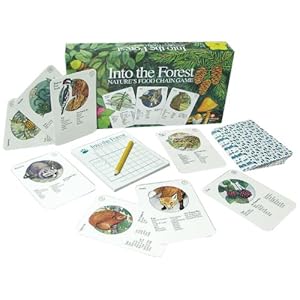Elementary and Middle School Biology
You can use any of a variety of science curriculum, or you can just do explorations and experiments that interest your students, but usually at some point homeschool teachers wonder if they have done enough. This often happens as you begin to think about the transition into high school. So, what do students need to know before they begin high school level biology?
Biology is the study that most people like to do in the younger grades. It is easy, requires no math skills and usually interests younger students. The bonus is that you can also incorporate nature study with biology.
In the younger grades, you might cover topics such as:
Habitats of various animals,
How animals hibernate in the winter,
zoo animals,
or Participating in The Great Backyard Bird Count.
You could also do a project such as documenting a garden project or a year-long nature study of a tree or a habitat in your area.
You could raise a butterfly or tadpole to learn about life cycles, either by buying a kit or finding one yourself.
I really like the Elementary level Apologia Science books and think they are a great background for high school level biology, but we can't seem to stick to one topic for a full year, so we have done them, a little bit from this book, and a little from that as their interests take them. You could easily do a unit study on any biology topic yourself instead.

You can use games to teach biology topics. We loved using Into the Forest to teach food chains. If you have a larger group, such as at a co-op, you can do group games such as a Food Web game, to learn terms such as herbivore, carnivore, omnivore, producer, consumer, decomposer... without any effort at all.
Other games we have liked are:
Somebody (Human Biology, ages 6-9)
Skeletons in the Closet (Human Biology, ages 7-13)
Field trips are also great to do for a wide variety of ages. Besides all sorts of nature study and habitat areas, you could visit
a zoo or nature preserve,
aquariums,
beekeepers,
fish hatchery,
science museum,
or nature center.
As they get a bit older, you might make some hands-on models.
The more terms that the students can learn before they begin high school work, the better foundation they will have and the less they will have to memorize then.
Strewing biology materials around the house often sparks interest and inspires students to learn a lot all on their own.
 Good investments are models, magnifiers, a good quality microscope and a set of slides, and of course, lots of good quality books. Some equipment can also be made, such as a water scope.
Good investments are models, magnifiers, a good quality microscope and a set of slides, and of course, lots of good quality books. Some equipment can also be made, such as a water scope.
You can also begin to cross biology topics with other science topics, such as density and buoyancy in relation to how fish move in the water.
Other things you could do are
Biology is the study that most people like to do in the younger grades. It is easy, requires no math skills and usually interests younger students. The bonus is that you can also incorporate nature study with biology.
In the younger grades, you might cover topics such as:
Habitats of various animals,
How animals hibernate in the winter,
zoo animals,
or Participating in The Great Backyard Bird Count.
You could also do a project such as documenting a garden project or a year-long nature study of a tree or a habitat in your area.
You could raise a butterfly or tadpole to learn about life cycles, either by buying a kit or finding one yourself.
I really like the Elementary level Apologia Science books and think they are a great background for high school level biology, but we can't seem to stick to one topic for a full year, so we have done them, a little bit from this book, and a little from that as their interests take them. You could easily do a unit study on any biology topic yourself instead.

You can use games to teach biology topics. We loved using Into the Forest to teach food chains. If you have a larger group, such as at a co-op, you can do group games such as a Food Web game, to learn terms such as herbivore, carnivore, omnivore, producer, consumer, decomposer... without any effort at all.
Other games we have liked are:
Somebody (Human Biology, ages 6-9)
Skeletons in the Closet (Human Biology, ages 7-13)
 |
| Visiting Beekeepers |
a zoo or nature preserve,
aquariums,
beekeepers,
fish hatchery,
science museum,
or nature center.
As they get a bit older, you might make some hands-on models.
 |
| Parts of the Brain Model |
 |
| Using Anatomy Models |
 Good investments are models, magnifiers, a good quality microscope and a set of slides, and of course, lots of good quality books. Some equipment can also be made, such as a water scope.
Good investments are models, magnifiers, a good quality microscope and a set of slides, and of course, lots of good quality books. Some equipment can also be made, such as a water scope. |
| Density, Buoyancy and Fish |
 |
| Strawberry DNA Extraction |
DNA Extraction
Blood Typing
Owl Pellet Dissection
 |
| Human Biology: Bones and the Skeletal System |

